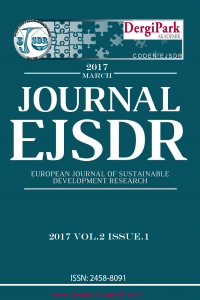Abstract
Parasporins
are Cry proteins produced by Bacillus
thuringiensis (Bt) strains during
sporulation processes and notable for targeting the cancer cells with their
unique cytotoxicity mechanism without exerting haemolytic effect on normal
cells. Parasporins are specifically produced by Bt strains with non-insecticidal effect. Although the studies on
parasporins go back to the 1970s, comprehensive scan about the cytotoxicity of
parasporins was performed by Mizuki and colleagues. Considering that these
proteins exhibit selective toxicities on human cancer cell lines but not on normal
cells, detailed studies about the mode of action of anti-cancer effect was
investigated in several countries. Specificity and abundance of parasporin
producing Bt species in nature
brought them into an important position in terms of developing anti-cancer
agents. Parasporins are classified into six groups by the committee of
parasporin classification and nomenclature as parasporin-1 (PS1), PS2, PS3,
PS4, PS5, and PS6 by taking the amino acid homology into account. Activated
parasporins display cytotoxicity at varying degrees in different cancer cell
lines. There are numerous studies about promoting the use of Bt parasporins as anti-cancer agent in
human, but in depth studies should be carried out about their usability in
model organisms. Researches should also be deepened especially in vivo due to production of different
types of parasporins with different mechanism of action by different Bt strains. Clarification of the
molecular mechanisms of toxicity for every candidate parasporin on cancer cell
lines may ease the development of anti-cancer agents. Thus, the present study
was conducted to provide a review about the cytotoxic impacts of Bt parasporins on human cancer cell
lines.
Keywords
References
- A. I. Aronson and Y. Shai, “Why Bacillus thuringiensis insecticidal toxins are so effective : unique features of their mode of action,” FEMS Microbiol. Lett., vol. 195, pp. 1–8, 2001.
- S. Ishiwata, “On a new type of severe flacherie (sotto disease) (original in Japanese),” Dainihon Sansi Kaiho, vol. 114, no. 114, pp. 1–5, 1901.
- S. Yılmaz, “Molecular characterizatıon of Bacillus thuringiensis strains isolated from different locations and their effectiveness on some pest insects,” Erciyes university, 2010
Abstract
References
- A. I. Aronson and Y. Shai, “Why Bacillus thuringiensis insecticidal toxins are so effective : unique features of their mode of action,” FEMS Microbiol. Lett., vol. 195, pp. 1–8, 2001.
- S. Ishiwata, “On a new type of severe flacherie (sotto disease) (original in Japanese),” Dainihon Sansi Kaiho, vol. 114, no. 114, pp. 1–5, 1901.
- S. Yılmaz, “Molecular characterizatıon of Bacillus thuringiensis strains isolated from different locations and their effectiveness on some pest insects,” Erciyes university, 2010
Details
| Journal Section | Makaleler |
|---|---|
| Authors | |
| Publication Date | February 25, 2017 |
| Published in Issue | Year 2017 Volume: 2 Issue: 1 |


